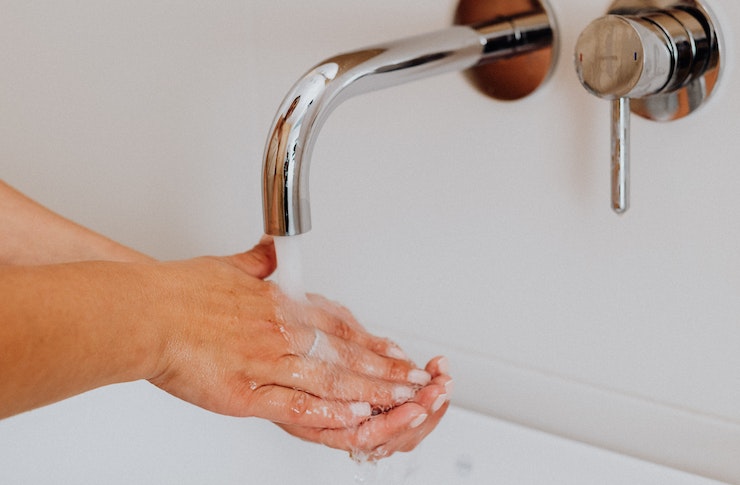Japanese Toilets in the UK: Your Guide to Smart Bidet Seats
The traditional Japanese toilet, often referred to as a smart toilet or bidet seat, represents a significant advancement in bathroom technology that combines hygiene, comfort, and sustainability. These sophisticated fixtures have been a staple in Japanese households for decades, offering features like warm water cleansing, heated seats, air drying, and automated functions. As UK homeowners increasingly seek bathroom upgrades that enhance comfort while reducing environmental impact, Japanese toilets have gained notable traction in the British market. This comprehensive guide explores everything you need to know about bringing this innovative bathroom technology into your UK home.

What is a Japanese Smart Toilet & How Does it Work?
Japanese smart toilets combine traditional toilet functionality with advanced bidet features and automation. Unlike conventional toilets, these high-tech systems typically offer heated seats, warm water cleansing sprays, adjustable water pressure, and air drying capabilities. The core technology centers around a nozzle system that extends beneath the user when activated, delivering a precise stream of temperature-controlled water for cleansing.
Most Japanese smart toilets also include customizable settings through a control panel mounted on the side of the seat or via a remote control. Advanced models incorporate sensors that automatically raise the lid as you approach, self-cleaning functions that use UV light or electrolyzed water to sanitize the bowl, and deodorizers that eliminate unwanted odors. Some premium versions even offer health monitoring features that can analyze waste and track certain health metrics over time.
How Much Do Smart Toilets Cost in the UK? Price Guide
The cost of Japanese smart toilets in the UK varies significantly depending on features, brand, and whether you’re purchasing a complete unit or a retrofit bidet seat for an existing toilet. Entry-level bidet seats typically start around £250-£400, offering basic washing functions and heated seats. Mid-range options priced between £500-£900 include additional features such as air drying, deodorizing functions, and user presets.
Premium smart toilets from brands like TOTO, Grohe, and Geberit can range from £1,000 to over £5,000 for complete integrated systems with advanced features such as automatic flushing, nightlights, self-cleaning modes, and personalized user profiles. Installation costs must also be considered, typically adding £200-£500 depending on your bathroom’s current plumbing setup and whether electrical work is required.
| Product Type | Price Range | Key Features |
|---|---|---|
| Basic Bidet Seat | £250-£400 | Heated seat, basic washing functions |
| Mid-Range Smart Toilet | £500-£900 | Multiple wash modes, air dryer, deodorizer |
| Premium Complete Unit | £1,000-£3,000 | Auto open/close, nightlight, self-cleaning |
| Luxury Integrated System | £3,000-£6,000+ | All features plus user profiles, health monitoring |
Prices, rates, or cost estimates mentioned in this article are based on the latest available information but may change over time. Independent research is advised before making financial decisions.
Cleaner & Greener: The Environmental Benefits of Smart Toilets
Japanese smart toilets offer significant environmental advantages that make them increasingly appealing to environmentally conscious UK homeowners. The most immediate benefit is paper reduction—bidet functionality can decrease toilet paper usage by up to 75%, addressing both deforestation concerns and reducing household waste.
Many smart toilet models incorporate water-saving technology despite their washing functions. Precision spray systems typically use less than 1/8 gallon (approximately 0.5 liters) of water per wash cycle, while modern low-flow flushing mechanisms further reduce water consumption compared to standard UK toilets. Over a year, this can save thousands of liters of water per household.
Energy efficiency is another consideration. While smart toilets do require electricity, most models include energy-saving modes that reduce power consumption when not in use. The environmental impact of manufacturing toilet paper—including water usage, chemical processing, and transportation—often outweighs the minimal electricity used by these efficient systems. Additionally, many premium models incorporate materials that resist bacterial growth, potentially reducing the need for harsh chemical cleaners that can harm waterways.
Installing Smart Toilets in UK Homes: What You Need to Know
Installing a Japanese smart toilet in a UK home requires consideration of several key factors. First, determine whether you want a complete toilet replacement or a retrofit bidet seat that attaches to your existing toilet. Retrofit options are generally more affordable and simpler to install but may offer fewer features than integrated systems.
Most smart toilets require both water and electrical connections. UK bathrooms typically have water supply lines readily accessible, but electrical requirements may pose challenges as they need a nearby grounded electrical outlet to power the seat’s functions. UK building regulations specify that electrical installations in bathrooms must follow strict safety guidelines—typically requiring a professional electrician to install a properly rated, protected outlet outside splash zones.
Space considerations also matter. Measure your bathroom carefully before purchasing, as Japanese smart toilets sometimes have different dimensions than standard UK models. Pay particular attention to the “rough-in” measurement (the distance from the wall to the center of the waste pipe), which should match your chosen toilet’s specifications.
For DIY enthusiasts, retrofit bidet seats can often be installed without professional help, requiring only basic tools to remove the existing seat and connect to the water supply. However, for complete toilet replacements or situations requiring new electrical connections, professional installation is strongly recommended to ensure safety and compliance with UK building regulations.
Conclusion
Japanese smart toilets offer UK homeowners a combination of enhanced hygiene, comfort, and environmental benefits. While the initial investment may be higher than conventional toilets, many users find the improved bathroom experience and potential long-term savings on toilet paper and water justifies the cost. As these innovative fixtures become more widely available in the UK market, understanding their functions, costs, environmental impacts, and installation requirements can help homeowners make informed decisions about upgrading their bathrooms with this Japanese technology.




